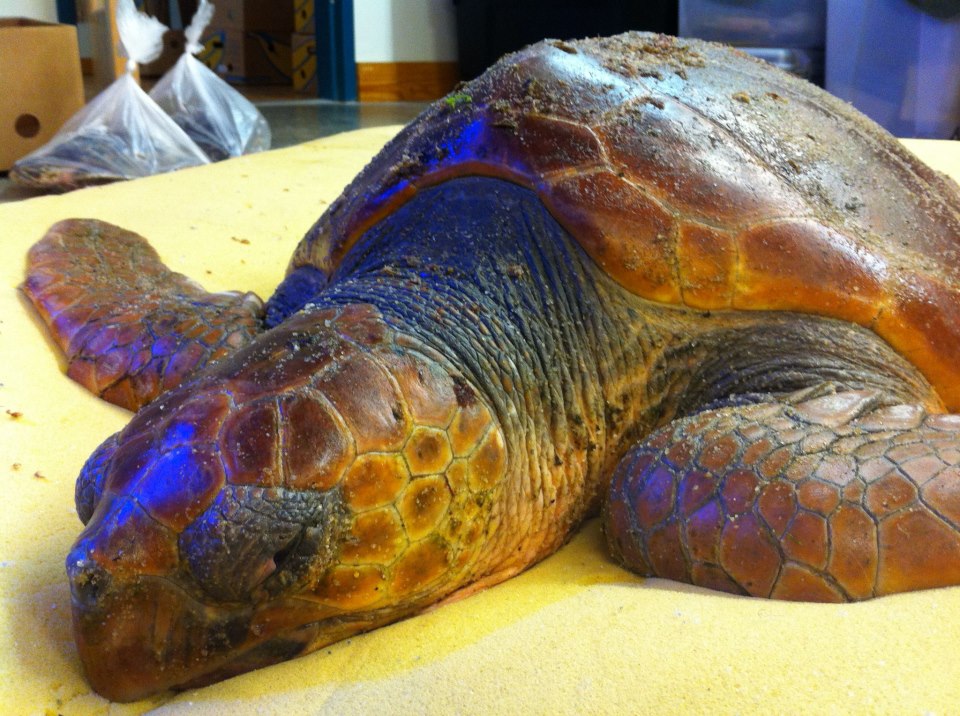 Molly Shuman-Goodier of Wellfleet Bay Wildlife Sanctuary reports on this year’s sea turtle stranding season.
Molly Shuman-Goodier of Wellfleet Bay Wildlife Sanctuary reports on this year’s sea turtle stranding season.
Every year come fall, the lower air and water temperatures lead to the stranding of many “cold-stunned” sea turtles on Cape Cod.
Strandings are not a new phenomenon: plenty of fish, turtles, and birds wash up each year. Yet, sea turtles are of particular interest because they are endangered, and we owe them a little help.
Why They Get Stranded
The kemps ridley, loggerhead, and green sea turtle juveniles that cold stun on the Cape are ectothermic organisms, meaning they cannot regulate their body temperatures. This means that the turtles unfortunate enough to swim into Cape Cod Bay get stuck as the water (and their body) temperature cools.
Unable to swim actively, the winter temperatures render the turtles helpless against the strong winds and tides. They wash up on bayside beaches were Mass Audubon staff and dedicated volunteers patrol tirelessly after high tides to locate turtles. Once found, the turtles are then sent to the New England Aquarium for rehab.
The Season So Far
After a record high of 198 total sea turtle sightings this summer, we knew 2012 would be a busy cold stun season. Volunteers and staff at Wellfleet Bay Wildlife Sanctuary worked around the clock during the busy period from November 22 to December 1, recovering over 150 turtles in 11 days, some weighing up to 100 pounds.
As December 13, 253 turtles have washed up cold-stunned, making this year the 2nd highest stranding year out of over 30 years on record. What makes this year especially significant is that 173 turtles have been encountered alive, meaning recovery rates at the aquarium will be higher than ever.
That said, there are still a couple more weeks left in the season, so we’d best get back out on the beaches!
Learn more about sea turtle strandings from Wellfleet Bay and what happens to the turtles once they’ve been rescued.

